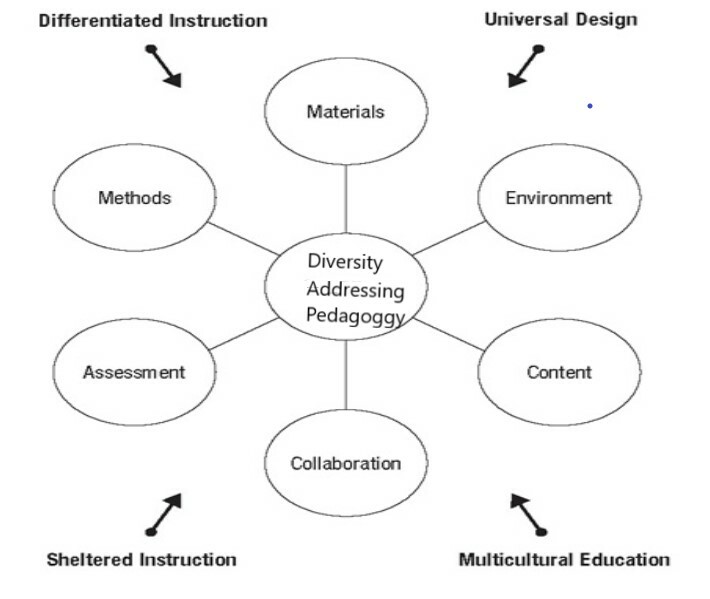e-Learning Ecologies MOOC’s Updates
Learners Diversity: Pedagogy design and management
Learner diversity – pedagogical design and management
Introduction: Teaching in Diverse, Standards-Based Classrooms
Today's educational institutions are becoming increasingly diverse. Many faculty members find that their classrooms are populated by gifted students, students coming from the first-generation university going groups, students with disabilities, students coming from various paid seat categories, students from underprivileged and relegated class, and students who are culturally diverse. Teachers by their personal observations and interaction, try to identify such diversity and address these issues. However, in e-learning, such personal contacts are not feasible for teachers. In e-learning scenarios even peer to peer interaction tends to become impersonal, with very little attention on the special needs of an individual.
It makes it necessary to design the courses, especially for e-learning, to tackle this lack of personal contact and adjustment by pedagogical design and course management process and tools. We have to understand that an increased diversity should not undermine the goal of inclusive education that “All students must achieve the same academic outcomes and standards.”.
The goal of Inclusive Pedagogy, tackling the issue of diversity as an advantage.
• Helping educators focus on critical knowledge and skills for all students.
• Providing multi paced learning, where every student will attain the same core proficiency by adopting different pace as per their capacities.
• Make the pedagogy so standard that the educator’s diversity and individuality play a non-significant role.
• Addressing the soft discrimination associated with lower expectations from underprivileged and differently-abled students.
• Serving as a catalyst to promote collaboration between teachers in general education, special education, for the progress of all students, including students with disabilities and students from diverse backgrounds.
• Preparing diverse students, with and without a disability for real-world challenges.
Universal Design for e-Learning
Universal design is an instructional approach that gives particular attention to students who have physical, sensory, and cognitive disabilities. Like differentiated instruction, the universal design embraces the idea that instruction should be designed from the beginning with students' diverse needs in mind. It takes care of seven issues while designing pedagogy.
Figure Courtesy: Connecting Teachers, Students, and Standards by Deborah L. Voltz, Michele Jean Sims, and Betty Nelson
• Methods of Instruction. This element shows the strategies and techniques that are employed during instruction. This is the "how" through which instruction is accomplished.
• Materials of Instruction. This element pertains to the tangible items that are used to support instruction. This is the "with what" through which instruction is accomplished.
• Environment of Instruction. This element focuses on the physical environment of the classroom, behavior management, and general classroom ethos.
• Content of Instruction. This element details what is being taught to students. It addresses curricular issues related to what students should know and be able to do.
• Collaboration for Instruction. This element pertains to how educators should work together in delivering instruction to diverse populations
• Assessment in Instruction. It includes informal, teacher-made assessments, as well as large-scale standardized tests.
References
1. Deborah L. Voltz, Michele Jean Sims and Betty Nelson (2017), Connecting Teachers, Students, and Standards
2. Banks, J. A., & Banks, C. M. (2009). Multicultural education: Issues and perspectives. Indianapolis, IN: Wiley.
3. Conklin, W., & Frei, S. (2007). Differentiating the curriculum for gifted learners. Huntington Beach, CA: Shell Education.
4. Council for Exceptional Children. (2005). Universal design for learning. Alexandria, VA: Author.
5. Rose, D. H., & Mayer, R. (2002). Teaching every student in the digital age: Universal design for learning. Alexandria, VA: ASCD.
6. Tomlinson, C. (2004). How to differentiate instruction in mixed-ability classrooms. Alexandria, VA: ASCD.


